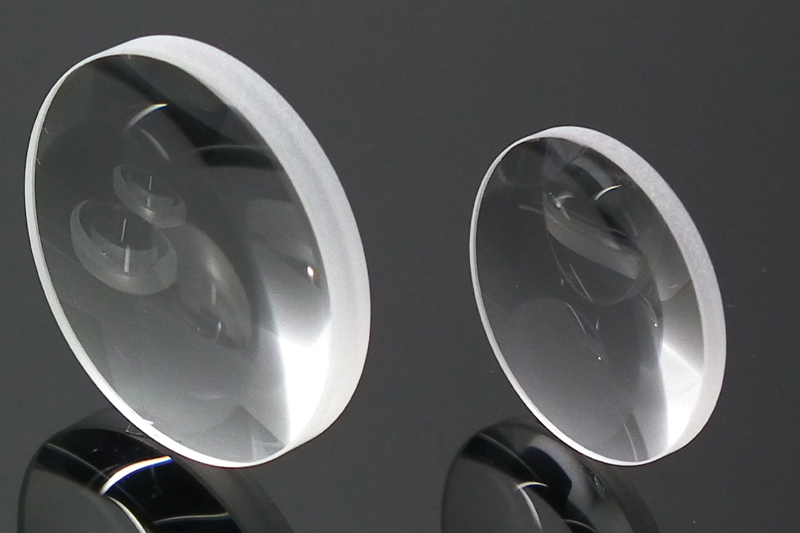Views: 0 Author: Site Editor Publish Time: 2025-03-20 Origin: Site








Lenses and prisms shape light in unique ways. Lenses bend rays to focus images – think camera zooms or microscope precision. Prisms redirect and split light, creating rainbows in sunlit rooms. These tools reveal how geometry controls photons, from ancient glass discoveries to modern laser systems. Discover how curved surfaces and angular crystals redefine human vision capabilities.
A lens is a transparent optical element with curved surfaces.
How lenses focus or disperse light through refraction.
Convex Lenses: Focusing light to form images (e.g., magnifying glasses, cameras).
Concave Lenses: Spreading light outwards (e.g., used in correction of myopia).
Compound Lenses: Multiple simple lenses combined (e.g., microscopes, telescopes).
Explanation of light bending when it passes through curved surfaces.
Importance of curvature and refractive index in focusing light to a point.
How lenses can form real or virtual images.
Eyeglasses: Correcting vision problems such as myopia and hypermetropia.
Cameras and Telescopes: Capturing clear images from distant objects.
Microscopes: Magnifying small objects for detailed examination.
A prism is a 3D optical element with flat faces, usually two parallel ends and parallelogram sides.
How prisms refract light differently from lenses.
Right-Angle Prisms: Typically used for image rotation and light redirection (e.g., in binoculars, periscopes).
Porro Prisms: A type of right-angle prism used to deviate light by 180°.
Dove Prisms: Used for rotating images without flipping them (e.g., in telescopes).
How prisms split light into its constituent colors (e.g., rainbow effect).
Light’s wavelength affects the angle of refraction, with shorter wavelengths (blue) refracting more and longer wavelengths (red) refracting less.
Spectroscopy: Breaking light into different colors for scientific analysis.
Optical Instruments: In telescopes, binoculars, and microscopes for light redirection.
Beam Steering: Prisms used to adjust the direction of light beams in various instruments.

Lenses Focus Light: Converge (convex) or diverge (concave) light to form images.
Prisms Refract Light: Do not focus light but refract and disperse it into multiple colors.
Shape:
Lenses: Curved surfaces.
Prisms: Flat surfaces.
Outcome:
Lenses: Create sharp images via focal points.
Prisms: Cause chromatic dispersion (e.g., rainbow effect).
Lenses: Essential in cameras (TTL/EFL optimization), microscopes, and vision correction.
Prisms: Critical for spectroscopy (wavelength analysis) and beam steering in advanced optics.

Lens-Centric Systems: Require precise curvature calculations (e.g., FOV, f/no).
Prism-Centric Systems: Prioritize angular light manipulation (e.g., CRA in imaging).
Photography: Hybrid systems combine GRIN lenses with prisms for multi-angle imaging.
Medical Optics: Gradient-index lenses enable minimally invasive neural imaging.
| Feature | Lens | Prism |
|---|---|---|
| Main Job | Focus light | Split light |
| Material | High-refractive glass | Precision-cut crystals |
| Light Show | Bends rays smoothly | Creates rai |
In conclusion, lenses and prisms serve distinct optical functions based on their structural and refractive properties.
Lenses utilize curved surfaces to focus or disperse light through refraction, enabling applications like image formation in cameras, magnifiers, and corrective eyewear. Their effectiveness relies on precise curvature and material transparency to minimize distortion.
Prisms, with non-parallel flat surfaces, primarily refract and disperse light into spectral colors or redirect light via total internal reflection, as seen in binoculars and scientific instruments.
While lenses manipulate light paths to converge or diverge beams at focal points, prisms exploit wavelength-dependent refraction for spectral analysis or reflection without focusing. Both devices exemplify how geometry and refractive indices govern light behavior, underpinning advancements in optics, imaging, and spectroscopy across scientific and technological fields.